A Two-Round Optimization Design Method for Aerostatic Spindles Considering the Fluid–Structure Interaction Effect
Abstract
1. Introduction
2. A Two-Round Optimization Design Method of Aerostatic Spindles Considering the FSI Effect
3. The Configuration of an Aerostatic Spindle
4. The First-Round Optimal Design of Aerostatic Thrust Bearings
4.1. FEM Modeling of Aerostatic Bearings
4.2. Optimal Design of the Geometrical Parameters of the Restrictor
5. The Second-Round Optimal Design of Crucial Structural Dimensions
5.1. FSI Modeling of Aerostatic Thrust Bearing
5.2. Optimal Design of the Structural Dimensions of the Aerostatic Spindle
6. Experimental Validation of the Calculation Result
6.1. Measurement of Orifice Diameter
6.2. Measurement of Air Film Thickness
6.3. The Axial Stiffness Test of the Aerostatic Spindle
7. Conclusions
Author Contributions
Funding
Institutional Review Board Statement
Informed Consent Statement
Data Availability Statement
Conflicts of Interest
References
- Gao, Q.; Chen, W.; Lu, L.; Huo, D.; Cheng, K. Aerostatic bearings design and analysis with the application to precision engineering: State-of-the-art and future perspectives. Tribol. Int. 2019, 135, 1–17. [Google Scholar] [CrossRef]
- Chen, Y.; Chiu, C.; Cheng, Y. Influences of operational conditions and geometric parameters on the stiffness of aerostatic journal bearings. Precis. Eng. 2010, 34, 722–734. [Google Scholar] [CrossRef]
- Chen, X.; He, X. The effect of the recess shape on performance analysis of the gas-lubricated bearing in optical lithography. Tribol. Int. 2006, 39, 1336–1341. [Google Scholar] [CrossRef]
- Li, Y.; Ding, H. Influences of the geometrical parameters of aerostatic thrust bearing with pocketed orifice -type restrictor on its performance. Tribol. Int. 2007, 40, 1120–1126. [Google Scholar] [CrossRef]
- Belforte, G.; Colombo, F.; Raparelli, T.; Trivella, A.; Viktorov, V. Comparison between Grooved and Plane Aerostatic Thrust Bearings: Static Performance. Meccanica 2011, 46, 547–555. [Google Scholar] [CrossRef]
- Du, J.; Zhang, G.; Liu, T.; Suet, T. Improvement on load performance of externally pressurized gas journal bearings by opening pressure-equalizing grooves. Tribol. Int. 2014, 73, 156–166. [Google Scholar] [CrossRef]
- Hirani, H.; Suh, N.P. Journal bearing design using multiobjective genetic algorithm and axiomatic design approaches. Tribol. Int. 2005, 38, 481–491. [Google Scholar] [CrossRef]
- Wang, N.; Tsai, C.M.; Cha, K.C. Optimum design of externally pressurized air bearing using Cluster OpenMP. Tribol. Int. 2009, 42, 1180–1186. [Google Scholar] [CrossRef]
- Wang, N.; Cha, K.C. Multi-objective optimization of air bearings using hypercube-dividing method. Tribol. Int. 2010, 43, 1631–1638. [Google Scholar] [CrossRef]
- Wang, N.; Chang, Y.Z. Application of the Genetic Algorithm to the Multi-Objective Optimization of Air Bearings. Tribol. Lett. 2004, 17, 119–128. [Google Scholar] [CrossRef]
- Federico, C.; Marcello, C. Multi-objective optimization of a rectangular air bearing by means of genetic algorithms. J. Mech. Eng. Autom. 2012, 2, 355–364. [Google Scholar]
- Colombo, F.; Della Santa, F.; Pieraccini, S. Multi-Objective Optimisation of an Aerostatic Pad: Design of Position, Number and Diameter of the Supply Holes. J. Mech. 2020, 36, 347–360. [Google Scholar] [CrossRef]
- Bhat, N.; Barrans, S.M. Design and test of a Pareto optimal flat pad aerostatic bearing. Tribol. Int. 2008, 41, 181–188. [Google Scholar] [CrossRef]
- Luo, X.; Han, B.; Chen, X.; Li, X.; Jiang, W. Multi-physics modeling of tunable aerostatic bearing with air gap shape compensation. Tribol. Int. 2021, 153, 106587. [Google Scholar] [CrossRef]
- Gao, Q.; Lu, L.; Zhang, R.; Song, L.; Huo, D.; Wang, G. Investigation on the thermal behavior of an aerostatic spindle system considering multi-physics coupling effect. Int. J. Adv. Manuf. Technol. 2019, 102, 3813–3823. [Google Scholar] [CrossRef]
- Lu, L.; Chen, W.; Yu, N.; Wang, Z.; Chen, G. Aerostatic thrust bearing performances analysis considering the fluid-structure coupling effect. Proc. IMechE. Part J J. Eng. Tribol. 2016, 230, 1588–1596. [Google Scholar] [CrossRef]
- Lu, L.; Gao, Q.; Chen, W.; Liu, L.; Wang, G. Investigation on the fluid–structure interaction effect of an aerostatic spindle and the influence of structural dimensions on its performance. Proc. IMechE. Part J J. Eng. Tribol. 2017, 231, 1434–1440. [Google Scholar] [CrossRef]
- Gao, Q.; Lu, L.; Chen, W.; Liu, L.; Wang, G. A novel modeling method to investigate the performance of aerostatic spindle considering the fluid-structure interaction. Tribol. Int. 2017, 115, 461–469. [Google Scholar] [CrossRef]
- Powell, J.W. Design of Aerostatic Bearings; Machinery Pub. Co: Brighton, UK, 1970; pp. 89–99. [Google Scholar]
- Liu, T.; Liu, Y.; Chen, S. Aerostatic Lubrication; Harbin Institute of Technology Press: Harbin, China, 1990; pp. 51–98. [Google Scholar]
- Wang, Y. Gas Lubrication Theory and Gas Bearing Design; China Machine Press: Beijing, China, 1999; pp. 144–204. [Google Scholar]
- Gao, Q.; Zhao, H.; Lu, L.; Chen, W.; Zhang, F. Investigation on the formation mechanism and controlling method of machined surface topography of ultra-precision flycutting machining. Int. J. Adv. Manuf. Technol. 2020, 106, 3311–3320. [Google Scholar] [CrossRef]
- Gao, Q.; Qi, L.; Gao, S.; Lu, L.; Song, L.; Zhang, F. A FEM based modeling method for analyzing the static performance of aerostatic thrust bearings considering the fluid-structure interaction. Tribol. Int. 2021, 156, 106849. [Google Scholar] [CrossRef]
- Xu, R. Finite Element Method in Structural Analyses and MATLAB Programming; China Communication Press: Beijing, China, 2006; pp. 161–188. [Google Scholar]
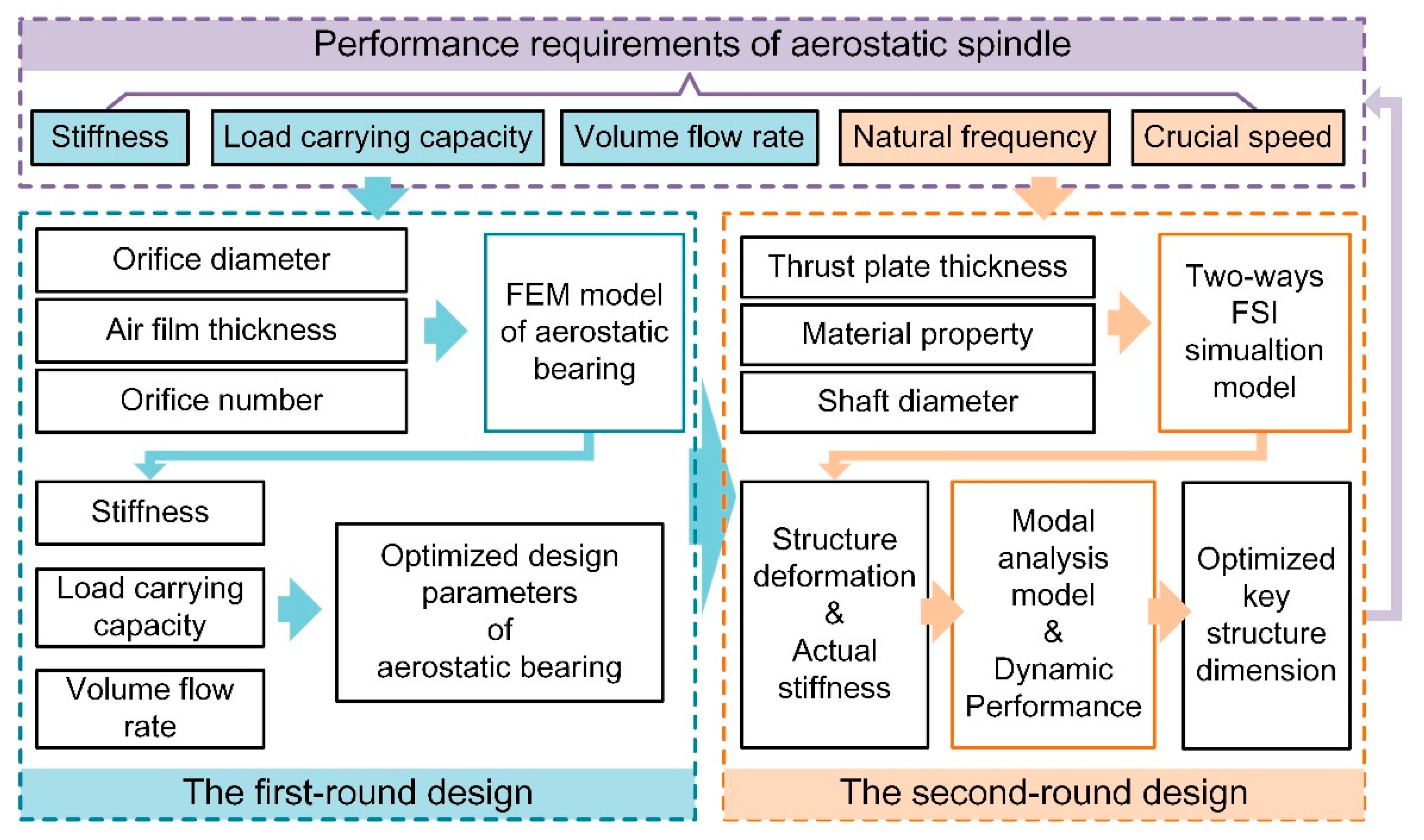
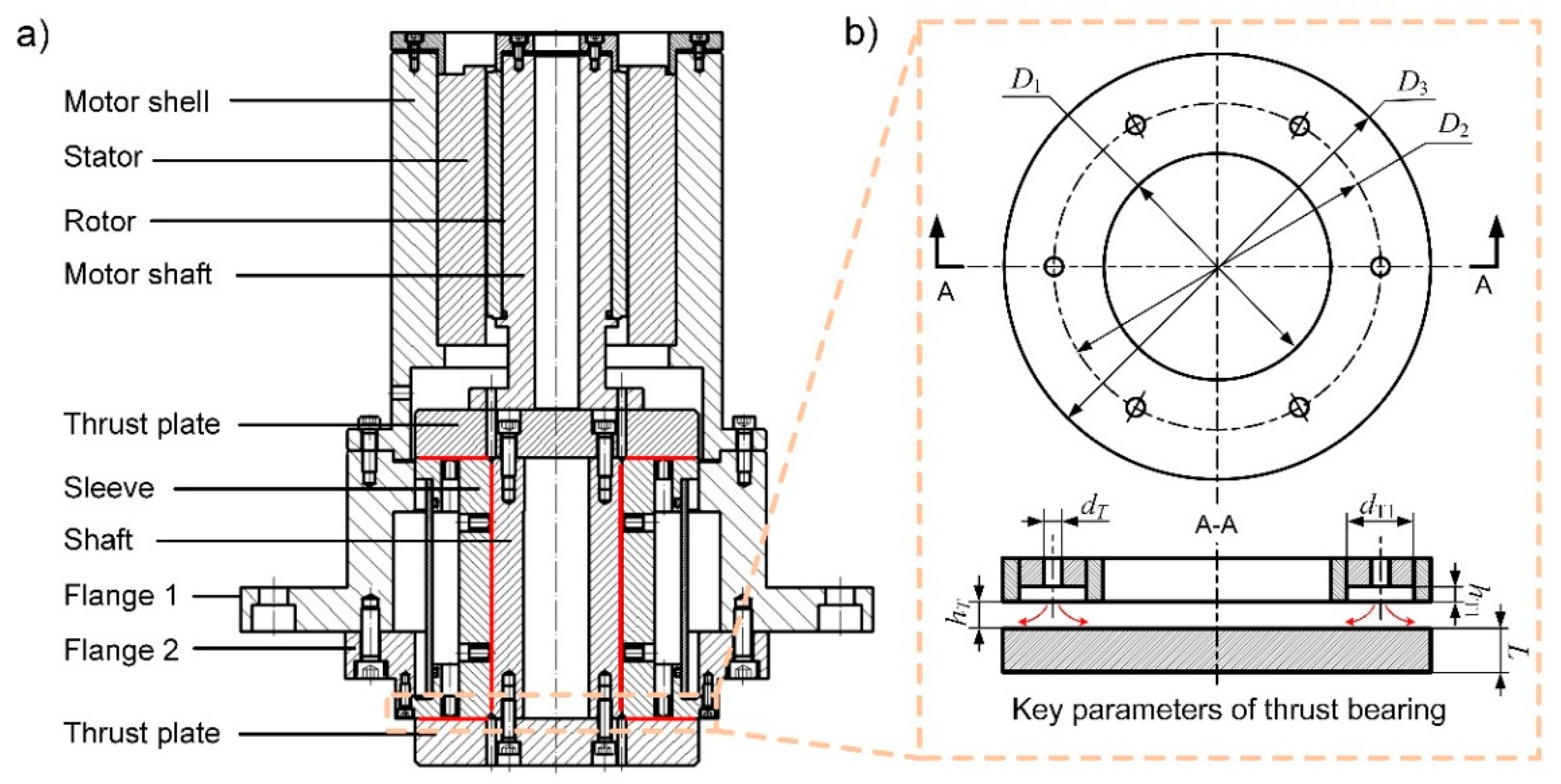
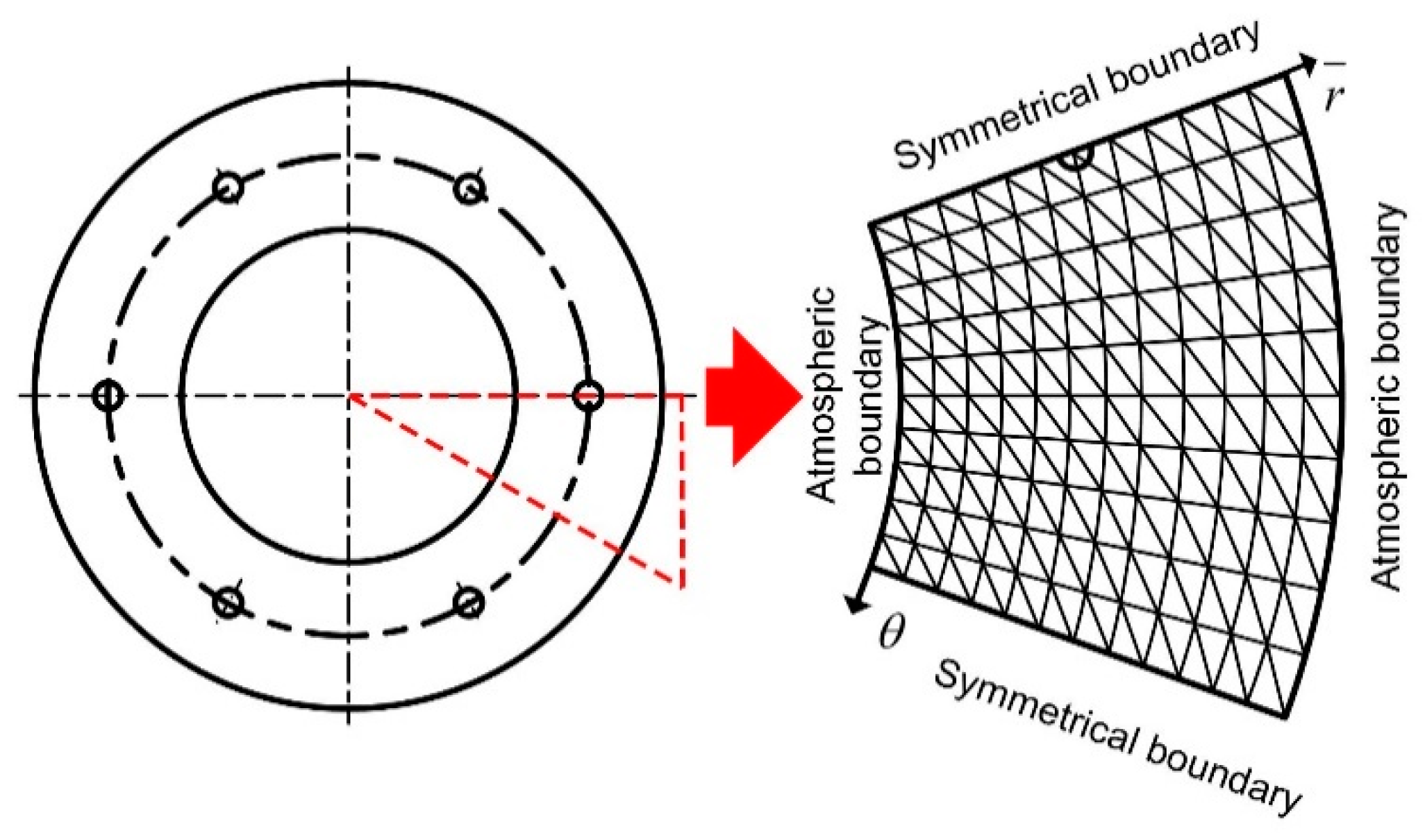


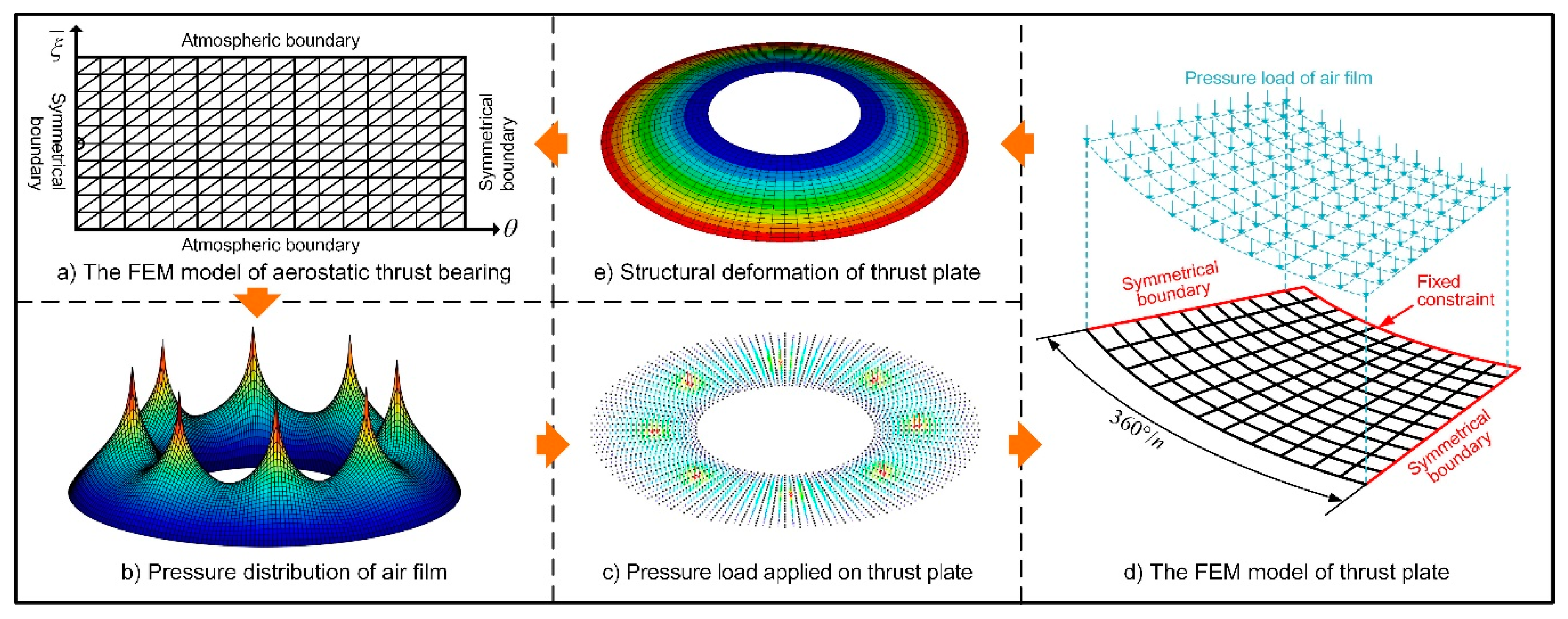
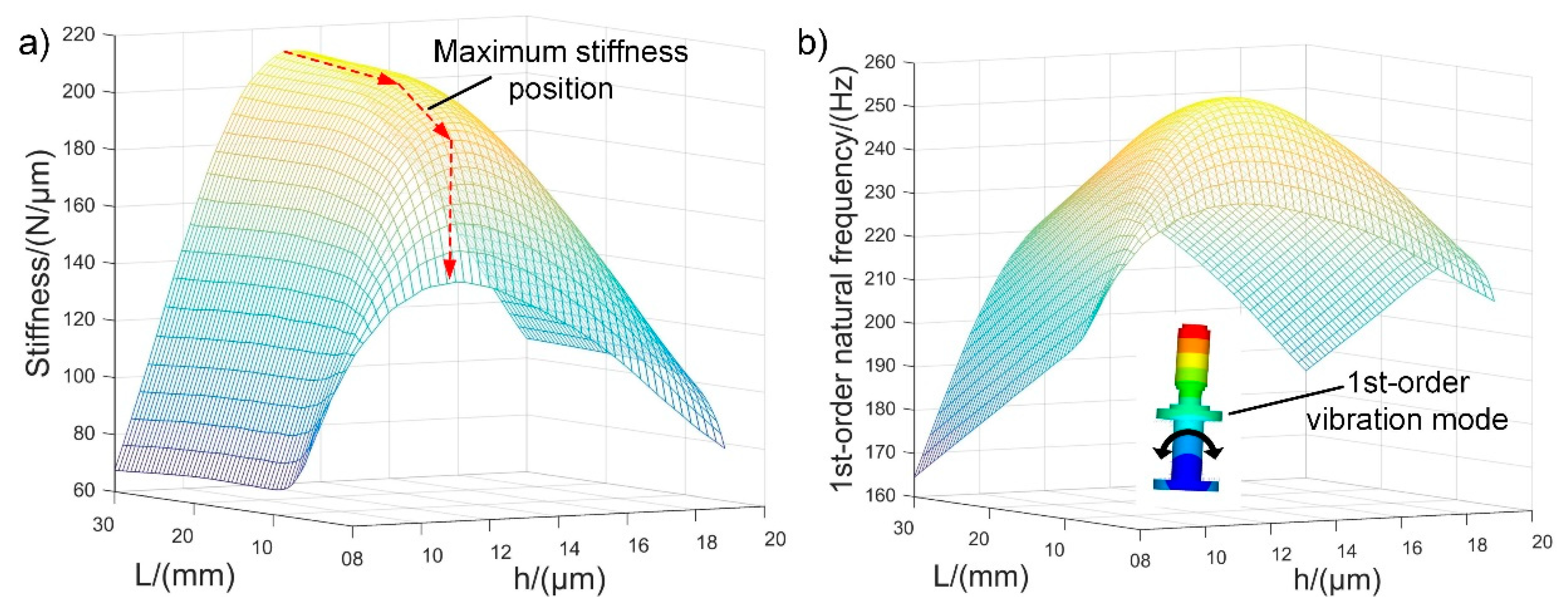
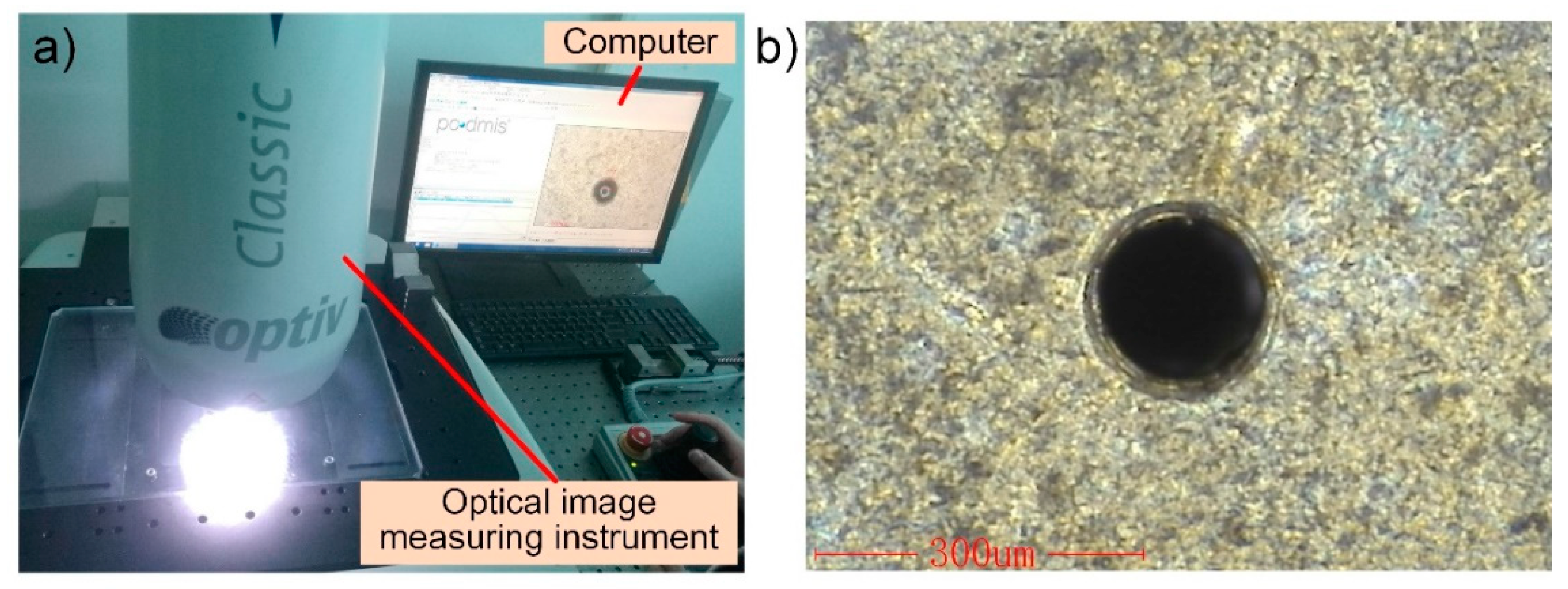



| D1 (mm) | D2 (mm) | D3 (mm) | d (mm) | h (μm) | d1 (mm) | h1 (mm) | n | L (mm) |
|---|---|---|---|---|---|---|---|---|
| 60 | 88.3 | 130 | 0.2 | 16 | 6 | 0.05 | 6 | 30 |
| Orifice Number | 1 | 2 | 3 | 4 | 5 | 6 | 7 | 8 |
|---|---|---|---|---|---|---|---|---|
| Orifice diameter (mm) | 0.148 | 0.147 | 0.154 | 0.148 | 0.153 | 0.152 | 0.151 | 0.151 |
| Test Point | 1 | 2 | 3 | 4 | 5 | 6 | 7 | 8 |
|---|---|---|---|---|---|---|---|---|
| Air film thickness (μm) | 12.86 | 12.72 | 12.89 | 12.78 | 12.93 | 12.84 | 12.86 | 12.84 |
Publisher’s Note: MDPI stays neutral with regard to jurisdictional claims in published maps and institutional affiliations. |
© 2021 by the authors. Licensee MDPI, Basel, Switzerland. This article is an open access article distributed under the terms and conditions of the Creative Commons Attribution (CC BY) license (http://creativecommons.org/licenses/by/4.0/).
Share and Cite
Gao, Q.; Gao, S.; Lu, L.; Zhu, M.; Zhang, F. A Two-Round Optimization Design Method for Aerostatic Spindles Considering the Fluid–Structure Interaction Effect. Appl. Sci. 2021, 11, 3017. https://doi.org/10.3390/app11073017
Gao Q, Gao S, Lu L, Zhu M, Zhang F. A Two-Round Optimization Design Method for Aerostatic Spindles Considering the Fluid–Structure Interaction Effect. Applied Sciences. 2021; 11(7):3017. https://doi.org/10.3390/app11073017
Chicago/Turabian StyleGao, Qiang, Siyu Gao, Lihua Lu, Min Zhu, and Feihu Zhang. 2021. "A Two-Round Optimization Design Method for Aerostatic Spindles Considering the Fluid–Structure Interaction Effect" Applied Sciences 11, no. 7: 3017. https://doi.org/10.3390/app11073017
APA StyleGao, Q., Gao, S., Lu, L., Zhu, M., & Zhang, F. (2021). A Two-Round Optimization Design Method for Aerostatic Spindles Considering the Fluid–Structure Interaction Effect. Applied Sciences, 11(7), 3017. https://doi.org/10.3390/app11073017







